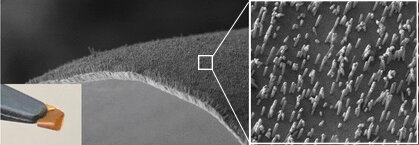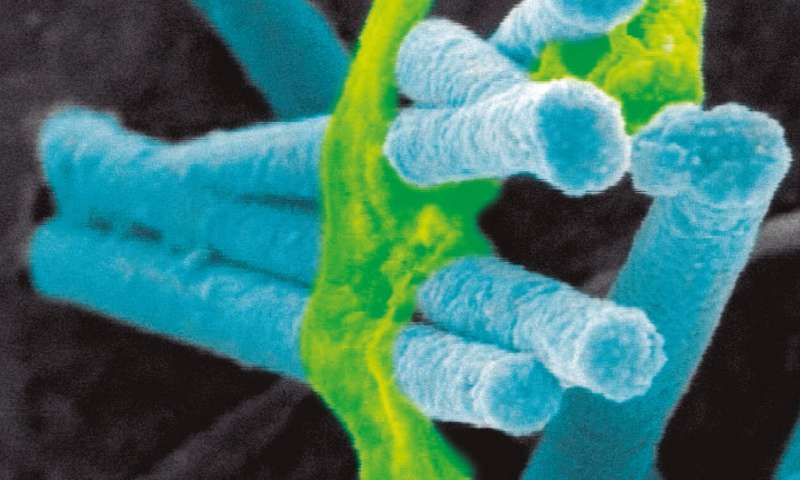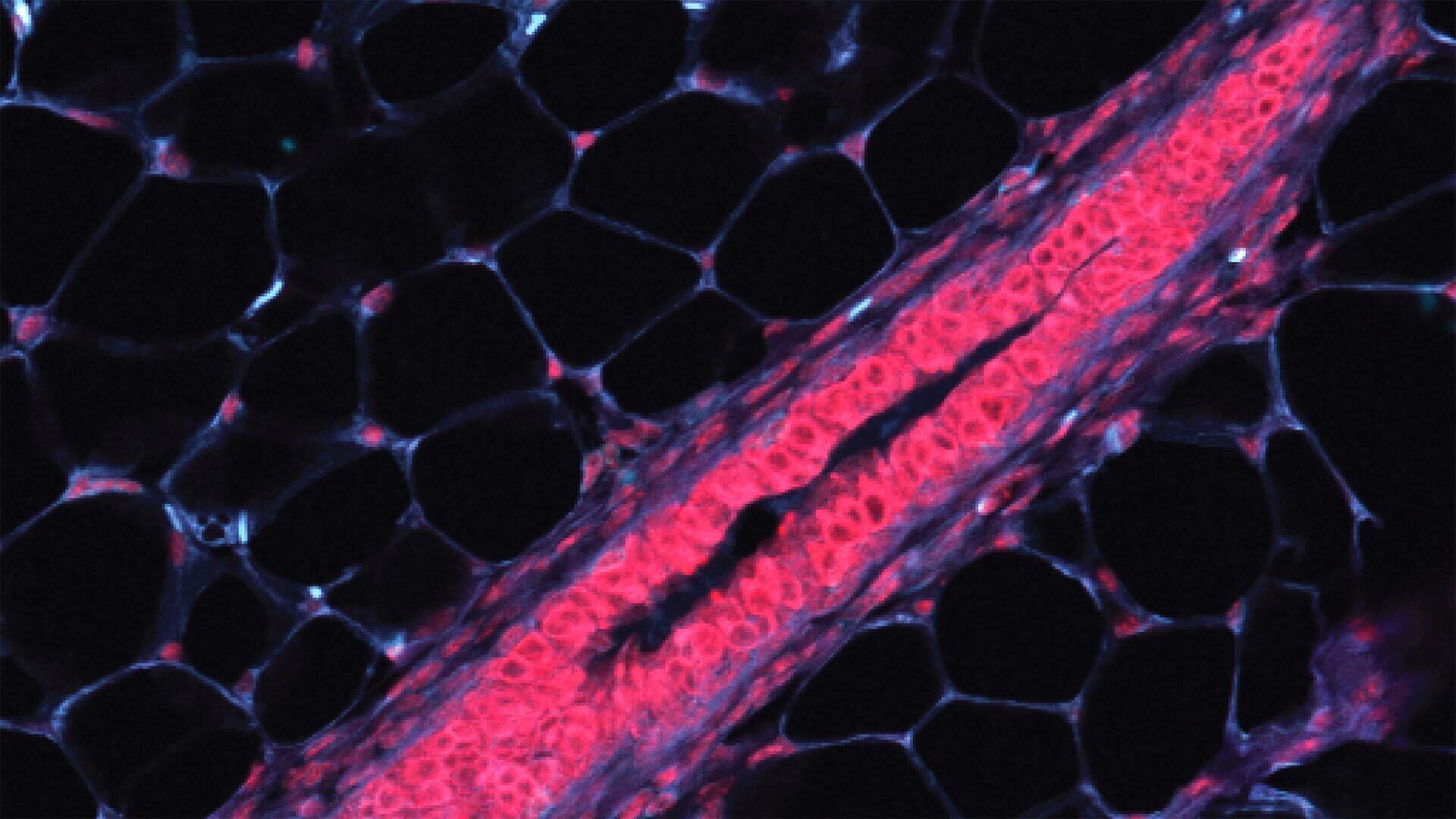#Speaking with neurons: Novel nanostructured neural electrodes

“#Speaking with neurons: Novel nanostructured neural electrodes”

Knowing the state of mammalian cells, in particular neural cells, depends on advances in nanotechnology‐based interfaces. Nanotechnology offers new technical possibilities to unravel the connectivity routes of the nervous system by adding nanoscale features for a more intimate interface with neurons. In this regard, non-invasive microelectrodes of improved design and low impedance are highly desired. So far flexible electrodes have been proposed, but only a few combine flexibility with both nanostructure and a low impedance.
A team of researchers coordinated from the institute IMDEA Nanociencia have designed flexible thin metal electrodes with nanotopography that could be a solution. The proposed electrode surface is nanostructured by arrays of vertical metallic nanowires to improve performance by reducing impedance and more intimately interfacing individual neurons with respect to conventional flat electrodes. These electrodes can be easily integrated over the surface of already existent neural interfaces for chronic implantation, minimizing the risk of foreign body reactions and long-term glial encapsulation, and thus prolonging the life of medical implants.
The electrodes could find application in technologies for neurodegenerative diseases. The majority of neural diseases are chronic or degenerative and produce very important cognitive and motor disabilities. Electrodes with particular characteristics are needed to study the neural system and to interact with it, in the search for knowledge and therapies. Lucas Pérez, co-author of the publication and researcher at IMDEA Nanociencia says: “What we have developed is a novel approach to fabricate nanostructured electrodes, easy to fabricate and integrate, that combine all the expected properties for neural electrodes: flexible, robust, with low impedance and reduced invasiveness.” María Concepción Serrano, co-author and researcher at ICMM-CSIC adds: “With a designed architecture at dimensions closer to those of cell components, these electrodes demonstrate good responses from neural cells, including the application of electrical stimulation, opening the pathway to eventual therapeutic uses for neural tissue stimulation and/or regeneration.”

Neural diseases such as spinal cord injury would be a clear target for the therapeutic application of these electrodes. “We need a better understanding of our neural system; we need tools to interact—to speak—with the neurons and this is what we are looking for. In the short term, we believe we can improve the performance of the electrodes currently used in neurology. In the future—let’s dream—we would like to develop a bypass for spinal cord injuries,” Dr. Pérez says. Enhancing the efficiency and biocompatibility of the electrodes will facilitate and extend their use for treating neural diseases and for developing brain-machine interfaces.
A sprinkle of platinum nanoparticles onto graphene makes brain probes more sensitive
Ana Domínguez‐Bajo et al. Interfacing Neurons with Nanostructured Electrodes Modulates Synaptic Circuit Features, Advanced Biosystems (2020). DOI: 10.1002/adbi.202000117
Citation:
Speaking with neurons: Novel nanostructured neural electrodes (2020, September 28)
retrieved 28 September 2020
from https://phys.org/news/2020-09-neurons-nanostructured-neural-electrodes.html
This document is subject to copyright. Apart from any fair dealing for the purpose of private study or research, no
part may be reproduced without the written permission. The content is provided for information purposes only.
For forums sites go to Forum.BuradaBiliyorum.Com
If you want to read more Like this articles, you can visit our Science category.

